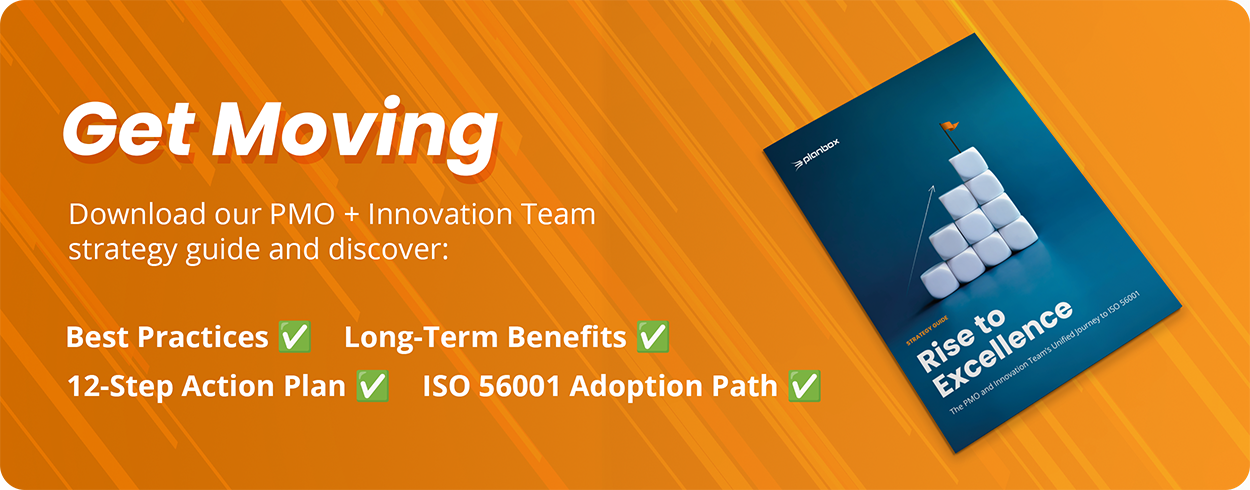Unifying the PMO and Innovation Team through ISO 56001 to Move the Business Forward.
The business universe is ever-expanding, and any organization not moving forward risks being sucked into the black hole of stagnation. Oh, the horror! Indeed, in this age of relentless change, the last thing any enterprise wants is a free-falling portfolio of innovative projects. Yet, there’s a problem of cosmic proportions in the world of PMO (Project Management Office), as evidenced by the distress signal sent from the CHAOS Report of The Standish Group:
- Only 29% of projects touch down successfully—on time, within budget, and with satisfying outcomes.
- 52% of projects veer off course—either going over budget, missing deadlines, or not meeting the set expectations.
- And, 19% crash land—either abandoned halfway or completed but left unused.
That’s concerning. And it gets worse! Another study by PMI unveils that poor project management leads to a staggering $97 million wastage per $1 billion invested. That’s a frightening 9.7% loss. Yikes! What in the world is going on?! Well, in the vast expanse of the PMO, it has become clear that organizational fine-tuning, enhanced budgeting, and alignment with the business strategy are mission-critical.
Perhaps, then, it’s time for an interstellar solution.
 Close Encounters of the Innovation Kind
Close Encounters of the Innovation Kind
As the PMO stays focused on the set objectives, ensuring projects don’t drift off course, the Innovation Team pushes boundaries, challenging the status quo, reinventing strategies, and boldly going where no team has gone before. Their skill set? Not just managing, but mastering the art and science of innovation, effectively ensuring a continuous and cost-effective approach to value creation and realization.
Specifically, here are four ways in which innovation management enhances the PMO’s capabilities:
- Systematic Ideation and Evaluation: It provides a structured approach for generating, evaluating, and implementing ideas, ensuring projects align with organizational goals.
- Enhanced Resource Forecasting: It emphasizes data-driven decision-making, enabling the PMO to forecast resource needs, minimizing budget overruns.
- Adaptive Methodologies: It introduces early-stage project prioritization, ranking, and vetting, facilitating adaptability and minimizing project failure risks.
- Stakeholder Collaboration Platforms: It offers tools that enhance collaboration and improve stakeholder communication and decision-making, crucial for project success.
Given this emphasis on innovation, the findings from Boston Consulting Group’s Most Innovative Companies 2023 report come as no surprise: this year, two-thirds of companies ranked innovation as their number one priority. What’s more, 90% anticipate ramping up their innovation budgets, with nearly all increasing by more than 10%!
Now, this begs the question: what if the PMO and the Innovation Team were not extraterrestrial to one another? Imagine, if you will, if these two teams collaborated, all while embracing a universal blueprint like ISO 56001. The result? An astronomical force for strategic and boundless innovation.
 The PMO’s Guide to ISO 56001
The PMO’s Guide to ISO 56001
ISO 56001, the standard for innovation management systems, isn’t merely a shiny badge of honor. Think of it as a set of practices ingraining innovation deep within the fabric of the organization. By embracing ISO 56001, PMOs are not only transcending agility but also professionalizing innovation.
This act of formalizing and streamlining innovative processes lay the groundwork for a future-fit innovation portfolio, ensuring the enterprise sails smoothly through cosmic winds and is ever ready to explore new frontiers. In fact, according to Forrester, organizations with a future-fit strategy—one underpinned by systematic innovation—grew revenue 1.8 times faster than their counterparts.
It’s worth noting that, as of writing this, ISO 56001 is still awaiting its official release in 2024. However, this delay shouldn’t deter you from getting ahead. Organizations can begin their journey with ISO 56002, the foundational guide for innovation management systems.
 The War of the Mandates
The War of the Mandates
Every initiative faces challenges, and adopting ISO 56001 is no exception—it’s like navigating through an asteroid belt: demanding, complex, and resource-heavy. Ensuring success requires organizations to select the right team for the job.
For instance, the IT department typically leads the implementation of ISO 27001, a standard for information security management systems (ISMS), while manufacturing departments often handle ISO 9001, a standard for quality management systems (QMS).
Conversely, the leadership for ISO 56001 isn’t as clear-cut. Departments such as IT, operations, manufacturing, and R&D, among others, play crucial roles in an organization, yet they might lack the expertise in innovation management to effectively helm the ISO 56001 initiative. The pressing question then becomes: who should take the lead?
Short answer: PMO and the Innovation Team!
 It Came from Innovation Management
It Came from Innovation Management
ISO 56001 orbits around innovation management, so it’s a no-brainer that the Innovation Team would be necessary for its successful deployment. But beyond processes, it’s the team itself that sets the tone, making the difference between mere adoption and transformative implementation. Here are the critical roles that the Innovation Team undertake:
- Performance Oversight: Oversees the innovation system’s performance and ensures regular evaluations.
- Cultural Development: Fosters a culture that supports innovation and creates awareness of its importance.
- Visionary Alignment: Sets a clear innovation vision, strategy, and policy in alignment with the organization’s goals.
- Resource Allocation: Provides the necessary resources and structures for the effective execution of the innovation system.
- Value Advocacy: Advocates for the realization of value through risk management and experimentation.
- Ethical Commitment: Maintains a commitment to ethics, sustainability, and continuous improvement in the innovation policy.
ISO 56001: A PMO Odyssey
While we’ve delved into the role of the Innovation Team, what then is the function of the PMO within this framework? Well, the PMO stands as the trusted captain, navigating the organization through the nebulous realms of innovation using ISO 56001. In this capacity, the PMO’s responsibilities encompass:
- Consistency and Compliance: Ensures innovation management processes align with ISO 56001 standards throughout the organization.
- Progress Reporting: Establishes a system to track progress towards ISO 56001 certification, identifies areas for improvement, and monitors the Innovation Team’s performance.
- Innovation Management Charter: Collaborates with the Innovation Team to outline the organization’s innovation goals, processes, and procedures, serving as a roadmap for ISO 56001 certification.
- Innovation Hub: Facilitates the establishment of an Innovation Center of Excellence that:
- Provides resources and support for innovation.
- Serves as a central platform for sharing best practices and knowledge on innovation management.
- Ensures alignment with the organization’s innovation objectives.
 When Teams Collide
When Teams Collide
So, picture this: the PMO and the Innovation Team hopping into a cosmic cruiser, co-piloting the organization towards ISO 56001. By joining forces, they’re not just ensuring a smooth ride but also aligning the enterprise’s trajectory with its big-picture goals. That means innovative efforts get a major boost, making an impact where it counts the most. The PMO’s knack for juggling projects becomes a superpower when combined with the Innovation Team’s pioneering expertise, leading to better risk management and more successful outcomes.
It gets better, though: this collaborative partnership ensures innovation isn’t just a department thing—it becomes an organization-wide ethos. Everyone, from the front desk to the top floor, gets in on the act, adding their own creativity to the mix. This not only fosters a sense of unity and engagement; it boosts coordination, drives efficiency, and makes sure every resource is put to its best use.
The best part? With this power duo at the helm, a culture of innovation isn’t just about coming up with innovative projects; it’s about staying ahead in a cutthroat galaxy where everyone’s racing to be number one. All said and done, when these teams collide, they don’t just float—they soar, ensuring the enterprise rides the wave of change, rather than getting swallowed by it.

Lucas Potasso-Justino
Chief Editor for the Future-Fit Manifesto and Content Marketing Specialist at Planbox. I write stuff that inspires front-line innovators on their journey towards an impactful innovation program. Follow me on LinkedIn.

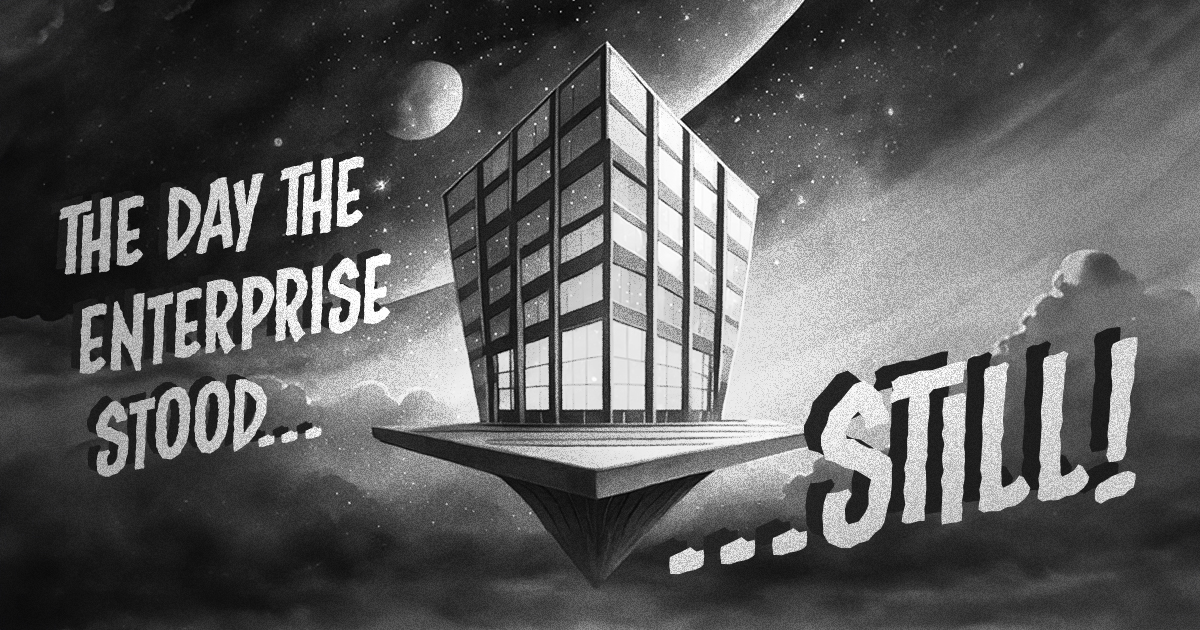
 Close Encounters of the Innovation Kind
Close Encounters of the Innovation Kind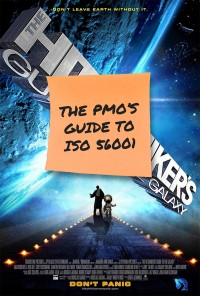 The PMO’s Guide to ISO 56001
The PMO’s Guide to ISO 56001 The War of the Mandates
The War of the Mandates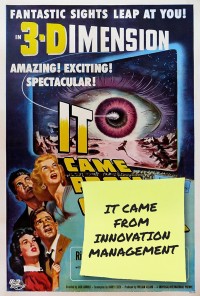 It Came from Innovation Management
It Came from Innovation Management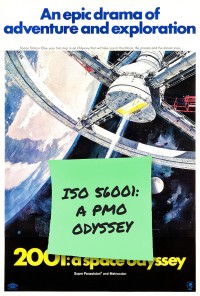
 When Teams Collide
When Teams Collide